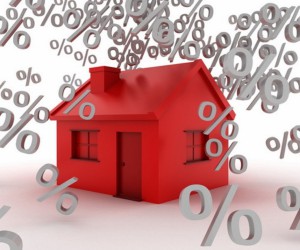The Reserve Bank of Australia has left official interest rates on hold at 1.5% after its October board meeting.
The decision to leave the cash rate on hold today was widely expected by experts.
All eyes will be on the Reserve Bank in November, following the third quarter inflation data due at the end of the month.
To better understand their thinking behind this and the future direction of interest rates, here are 3 experts views:
Martin Lakos ( Macquarie) comment:
The RBA met on Tuesday 4 October and kept interest rates on hold at 1.5%.
Interest rate policy around the world remaining stable and relatively benign domestic economic data would have influenced the RBA’s decision to keep rates on hold.
The next RBA board meeting will be held on Melbourne Cup Day, Tuesday 1 November.
Source: Macquarie
Tim Lawless (Corelogic) comments:
After two rate cuts earlier in the year, the Reserve Bank’s decision to hold the cash rate at their historically low level of 1.5% came as no surprise.
Housing market conditions were almost certainly one of the topics discussed at the board meeting, as well as the stubbornly high Australian dollar, an inflation rate that is well below the ta
From a housing market perspective, the commentary theme from the RBA has been one of slowing conditions, which has broadly been confirmed by the CoreLogic Hedonic Index which has shown the annual trend rate of growth across the combined capital cities is now well below double digits at 7.1% over the year ending September 2016.
A year ago capital city dwelling values were rising by 11% per annum.
Importantly, while growth conditions in the housing market have slowed, Sydney and Melbourne continue to record strong capital gains, albeit substantially lower than a year ago.
Sydney dwelling values were up 3.5% over the September quarter and the Melbourne values were stronger at 5.0% growth over the quarter.
Higher housing supply levels and lower levels of affordability are likely to naturally dampen some of the upwards pressure in housing markets, however investor activity has once again been consistently rising since June and some of the smaller capital city housing markets like Hobart and Canberra have been showing signs of accelerating.
Clearly, the housing market is diverse and low interest rates are only one factor that is influencing conditions.
The RBA is likely to be monitoring the housing market closely, looking for any signs of accelerating capital gains in the larger markets, or a ramp up in speculative investment activity
Eliza Owen (Residex) comments:
The Reserve Bank of Australia announced it will hold the official cash rate in October at 1.50%.
The hold decision was the first handed down from the new Governor of the Reserve Bank, Dr Phillip Lowe.
The decision came among concerns of weakness in the global banking sector, and signs of strength in the US economy.
The persistent strength of the AUD against the USD has factored into past RBA decisions this year.
The RBA pursued a low cash rate in hopes it would de-value the Australian dollar, and keep export volumes buoyant.
In the September policy statement, former RBA governor Glenn Stevens suggested an appreciating exchange rate could complicate the return to more robust economic growth in Australia, and the AUD has indeed surged.
The dollar is currently around US$0.77, above the average of US$0.76 over September.
The climb in the AUD may reflect OPEC’s successful negotiations in September to limit oil production – a decision that saw increases in many currencies that are tied to energy commodity exports.
As there is still uncertainty around OPEC relations however, currency movements may be volatile for energy exporters.
Furthermore, continued strength in the US economy may offset recent gains in the AUD.
Therefore, the currency may have factored less in today’s rate decision than in previous months.
Today’s hold decision may also be in anticipation of new inflation data.
June quarter inflation was at just 1% for the year; a 17 year low, and well below the cash rate target band of 2-3%.
Q3 figures will be released towards the end of October.
The appointment of Lowe is significant, because the governor has indicated the RBA may take a more flexible approach to pursuing the inflation target band, suggesting stability in future cash rate decisions, and urgent rate cuts unnecessary to stimulate spending.
This is also likely to allow steady growth movements in the over-heated east coast housing markets.
Residex non-revised median value figures indicate that most major markets experienced a decline in dwelling values over August.
The national aggregate showed median house values fell by 0.86% and unit values declined 0.87%.
Though the gradual moderation of dwelling prices may put deflationary pressures on the economy, other economic factors are gradually improving.
Iron ore gained approximately 30% in value over the year, and Manufacturing PMI, released yesterday, revealed an increase to 49.8 in September, up from 46.9 last month.
Finally, a rate hold may be expected as the efficacy of continued rate cuts is challenged by bank performance.
Globally, low interest rates have put banks in an awkward position of having lent at low interest rate returns, while simultaneously looking to pay higher rates for deposits in the future as the economy recovers.
This conundrum has contributed to a fall in Deutsche Bank profit and shares, creating economic instability in an already low growth environment.
Furthermore, Australian banks are coming under scrutiny after not passing on full rate cuts in August.
Maintaining the cash rate may facilitate greater financial stability in the coming months.
Source: On the House


No comments:
Post a Comment